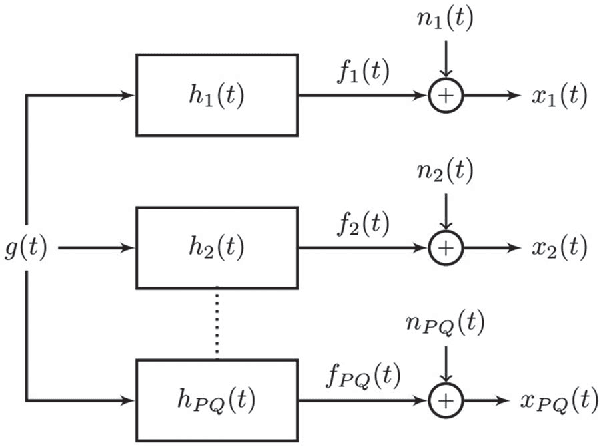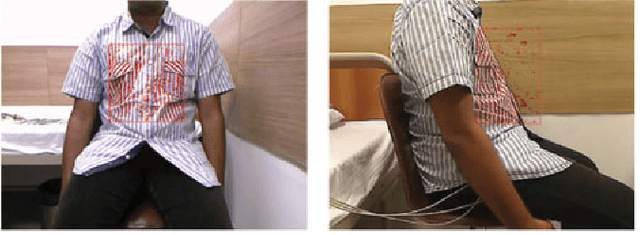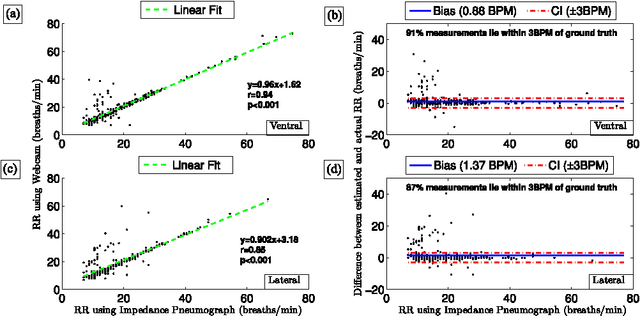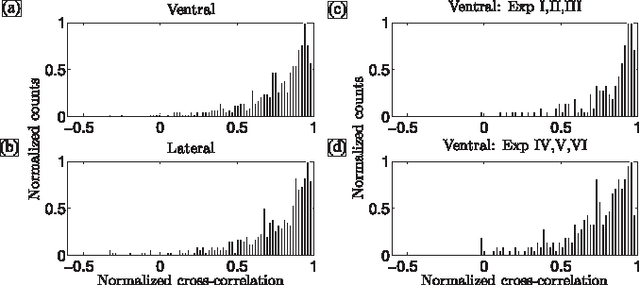Estimation of respiratory pattern from video using selective ensemble aggregation
Paper and Code
Nov 21, 2016



Non-contact estimation of respiratory pattern (RP) and respiration rate (RR) has multiple applications. Existing methods for RP and RR measurement fall into one of the three categories - (i) estimation through nasal air flow measurement, (ii) estimation from video-based remote photoplethysmography, and (iii) estimation by measurement of motion induced by respiration using motion detectors. These methods, however, require specialized sensors, are computationally expensive and/or critically depend on selection of a region of interest (ROI) for processing. In this paper a general framework is described for estimating a periodic signal driving noisy LTI channels connected in parallel with unknown dynamics. The method is then applied to derive a computationally inexpensive method for estimating RP using 2D cameras that does not critically depend on ROI. Specifically, RP is estimated by imaging the changes in the reflected light caused by respiration-induced motion. Each spatial location in the field of view of the camera is modeled as a noise-corrupted linear time-invariant (LTI) measurement channel with unknown system dynamics, driven by a single generating respiratory signal. Estimation of RP is cast as a blind deconvolution problem and is solved through a method comprising subspace projection and statistical aggregation. Experiments are carried out on 31 healthy human subjects by generating multiple RPs and comparing the proposed estimates with simultaneously acquired ground truth from an impedance pneumograph device. The proposed estimator agrees well with the ground truth device in terms of correlation measures, despite variability in clothing pattern, angle of view and ROI.
 Add to Chrome
Add to Chrome Add to Firefox
Add to Firefox Add to Edge
Add to Edge